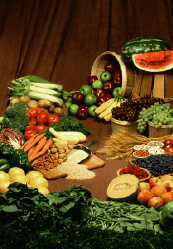Boosting Immunity and Supporting Digestion with the Kimchi Market
Kimchi is a traditional Korean dish that consists of some combination of salted and fermented vegetables. The dish is prepared using a wide range of seasonings, which include gochugaru, garlic, ginger, spring onions, and jeotgal, among others. The dish is a staple food in Korean cuisine and is also used in various soups and stews.
There exist several different types of kimchi in the market, with different vegetables being their main ingredients. This blog post will walk you through the kimchi making process and the main ingredients used to prepare it. Also, it covers how the kimchi market is expanding and what factors are propelling it forward.
Ingredients Used to Prepare Kimchi
Below we’ve listed some common ingredients used to prepare kimchi:
- Napa cabbage
- Water
- Salt
- Daikon radish
- Green onions
- Korean-style red pepper flakes
- Fish sauce
- Garlic
- Ginger
- Sugar
Growth Drivers
The kimchi market size was USD 3,462.92 million in 2022 and is expected to grow at a CAGR of 4.9%, generating an estimated revenue of USD 5,571.16 million by 2032.
Globalization and international trade are some of the primary factors driving the growth of the market. With the rising globalization of food culture, interest for Korean cuisine has increased among consumers worldwide. This, in turn, has created huge demand for Kimchi, resulting in an increase in international trade of the product.
To Get More Insights on Kimchi Market, Request for a Sample Report
How is Kimchi Made?
Step 1: Preparing the Cabbage
The first step involves rinsing the cabbage and chopping it into small pieces. After this, the cabbage pieces placed in a large bowl and mixed with salt. Then water is added to cover the cabbage.
Step 2: Fermenting the Cabbage
The next step involves keeping the cabbage submerged in salt water at room temperature for up to 24 hours. After this, the cabbage is drained and the salt brine is reserved.
Step 3: Adding more vegetables
This is when more vegetables are added to the drain cabbage. Here, pieces of daikon radish and green onions are added.
Step 4: Making the Chile Paste
In this step, garlic, sugar, ginger, fish sauce and gochugaru are placed inside a food processor and pulsed. The mixture is then combined to form a chunky paste.
Step 5: Mixing It All Together
The chile paste is added to the bowl and massaged until it gets well combined.
Step 6: Fermenting It for Second Time
Finally, the kimchi is packed into a mason jar and preserved for several days to give it taste.
Baechu Kimchi Segment Accounted for the Largest Market Share
Baechu kimchi is one of the most widely consumed types of kimchi. The popularity of this kimchi type can largely be attributed to its unique flavor and nutritional benefits it has to offer. Also, it’s highly versatile and can be used in several dishes, including stews, soups and pancakes. As a result, the segment is anticipated to hold a significant share of the kimchi market.
The Supermarkets/Hypermarkets Segment Held the Highest Revenue Share in 2022
Supermarkets and hypermarkets offer consumers to choose from a variety of kimchi products from different brands and packaging sizes. Also, they are able to provide more competitive prices due to their economics of scale. The convenience, product variety and competitive pricing offered by supermarkets and hypermarkets have enabled them to dominate the market.
Conclusion
In conclusion, kimchi is a popular traditional Korean dish that’s rich in nutritional content. Also, it can be used in several dishes like soups, stir-fries and pizza. Growing awareness regarding the health benefits of consuming kimchi has led to an uptick in demand for the product and is impacting the kimchi market sales favorably.


